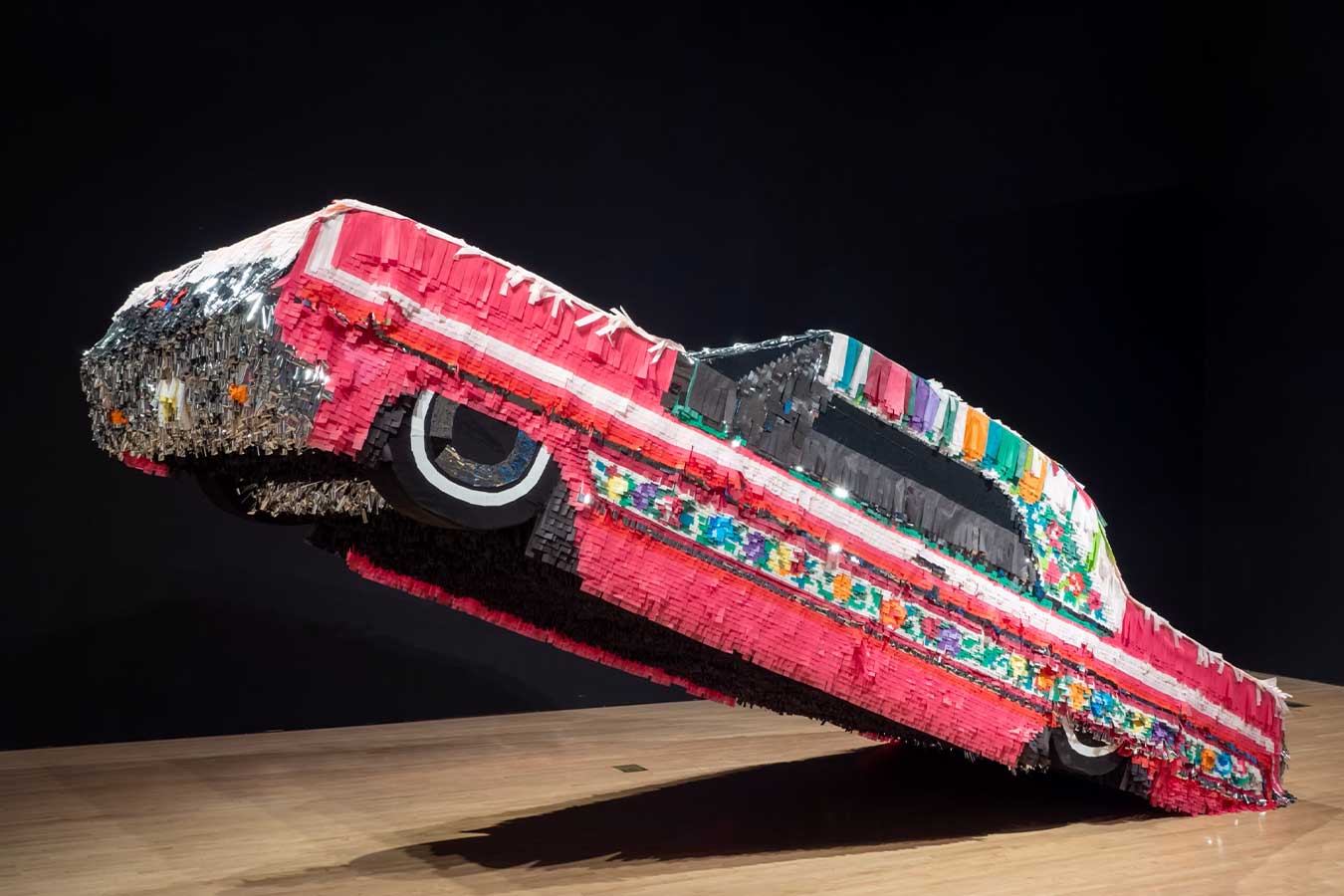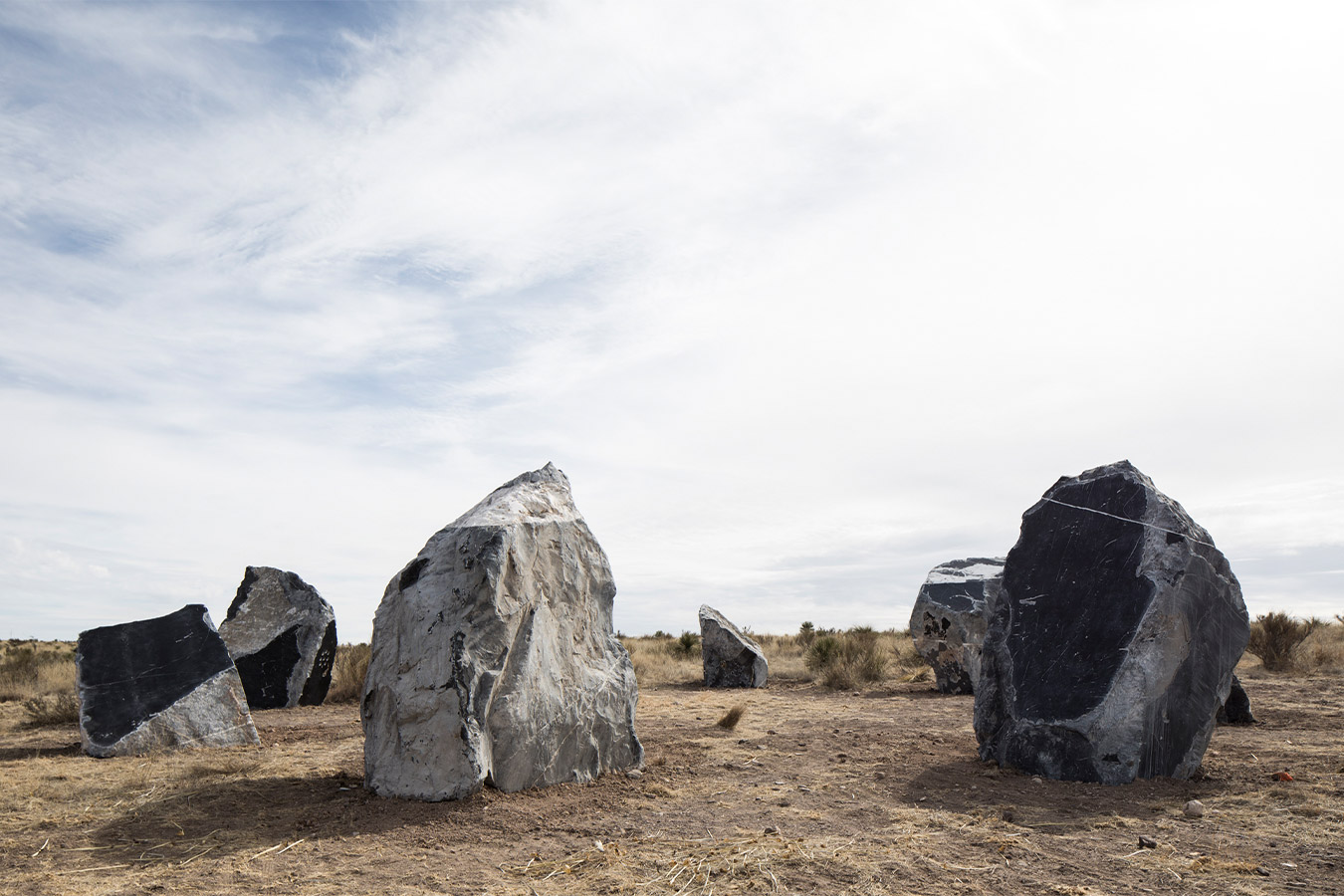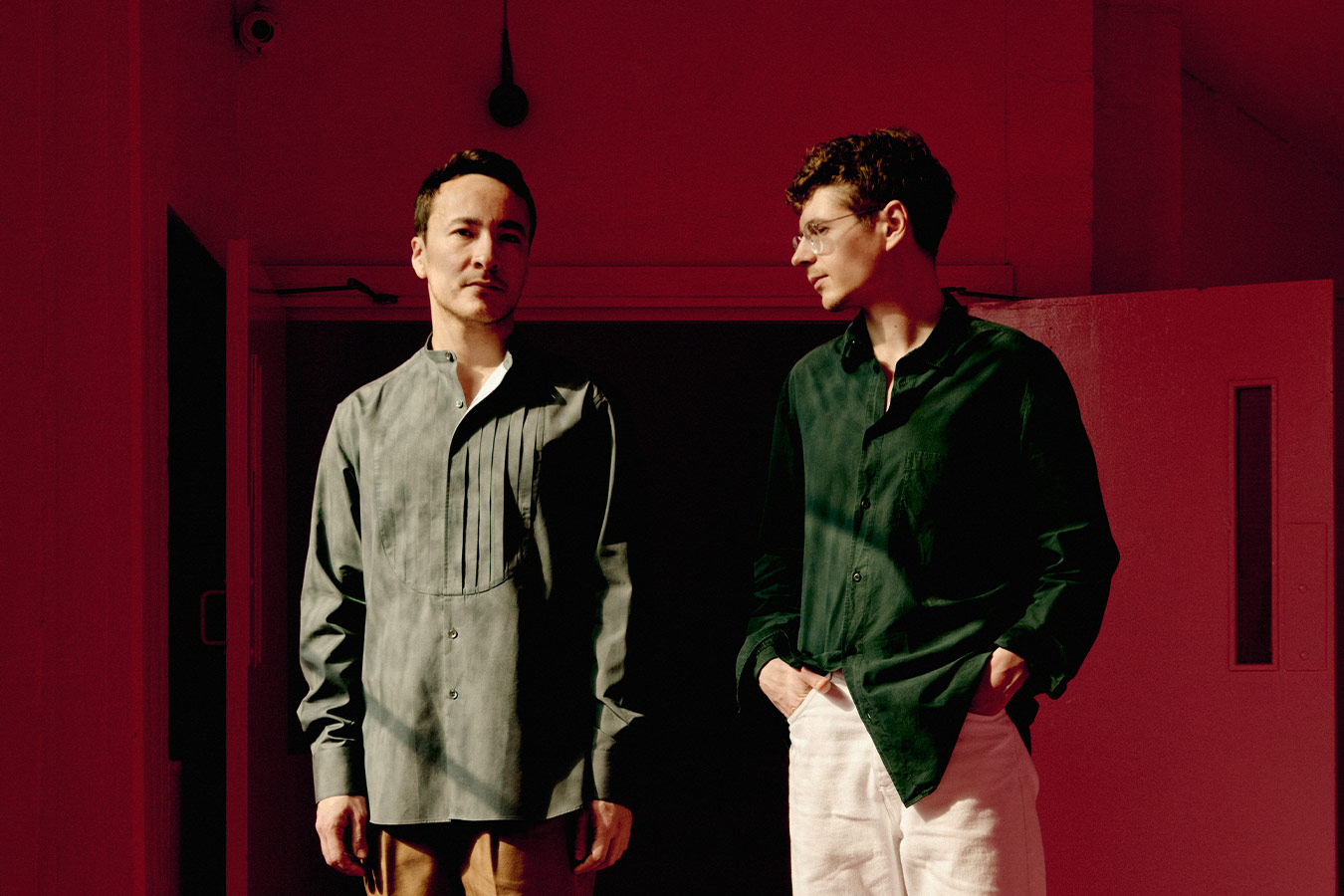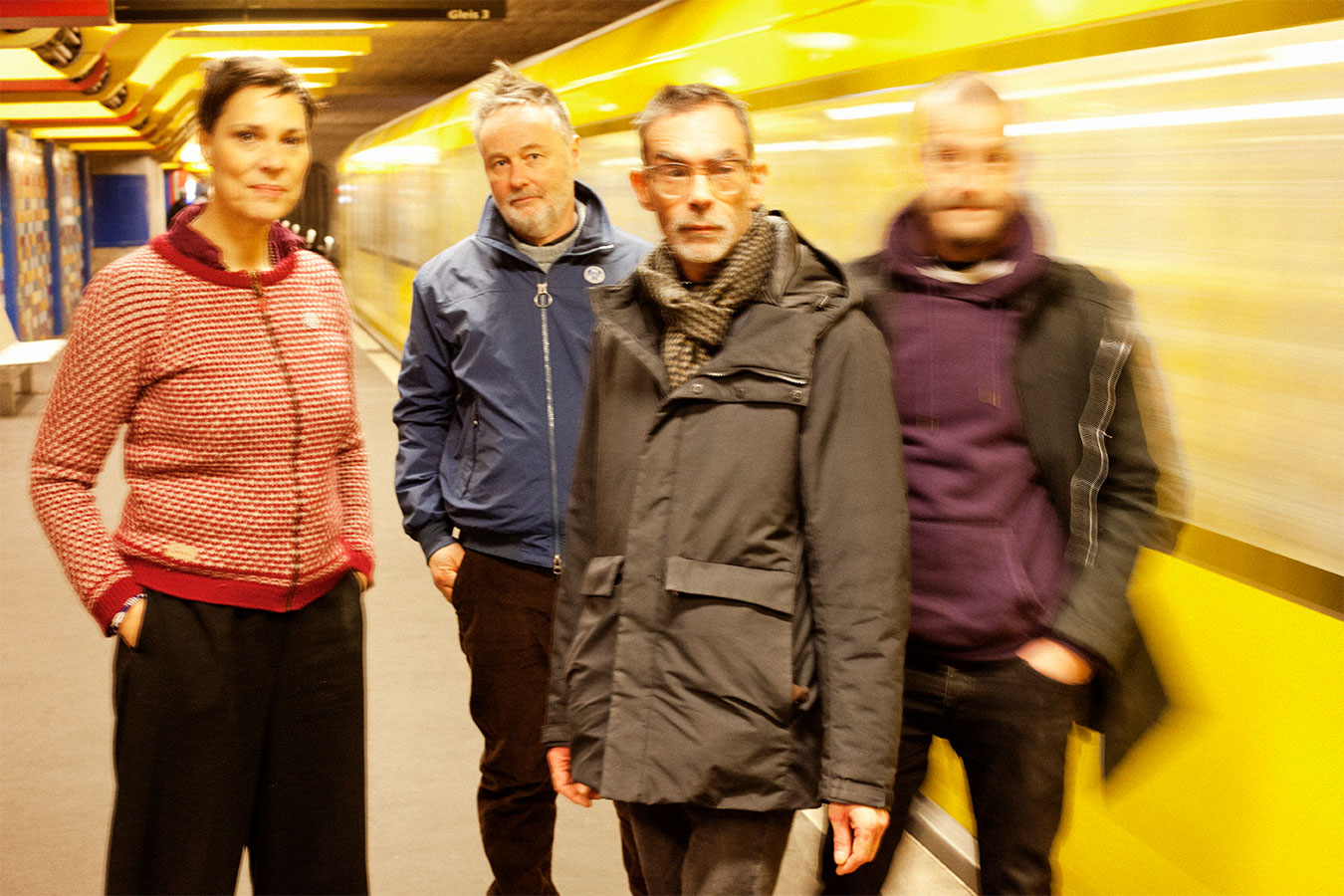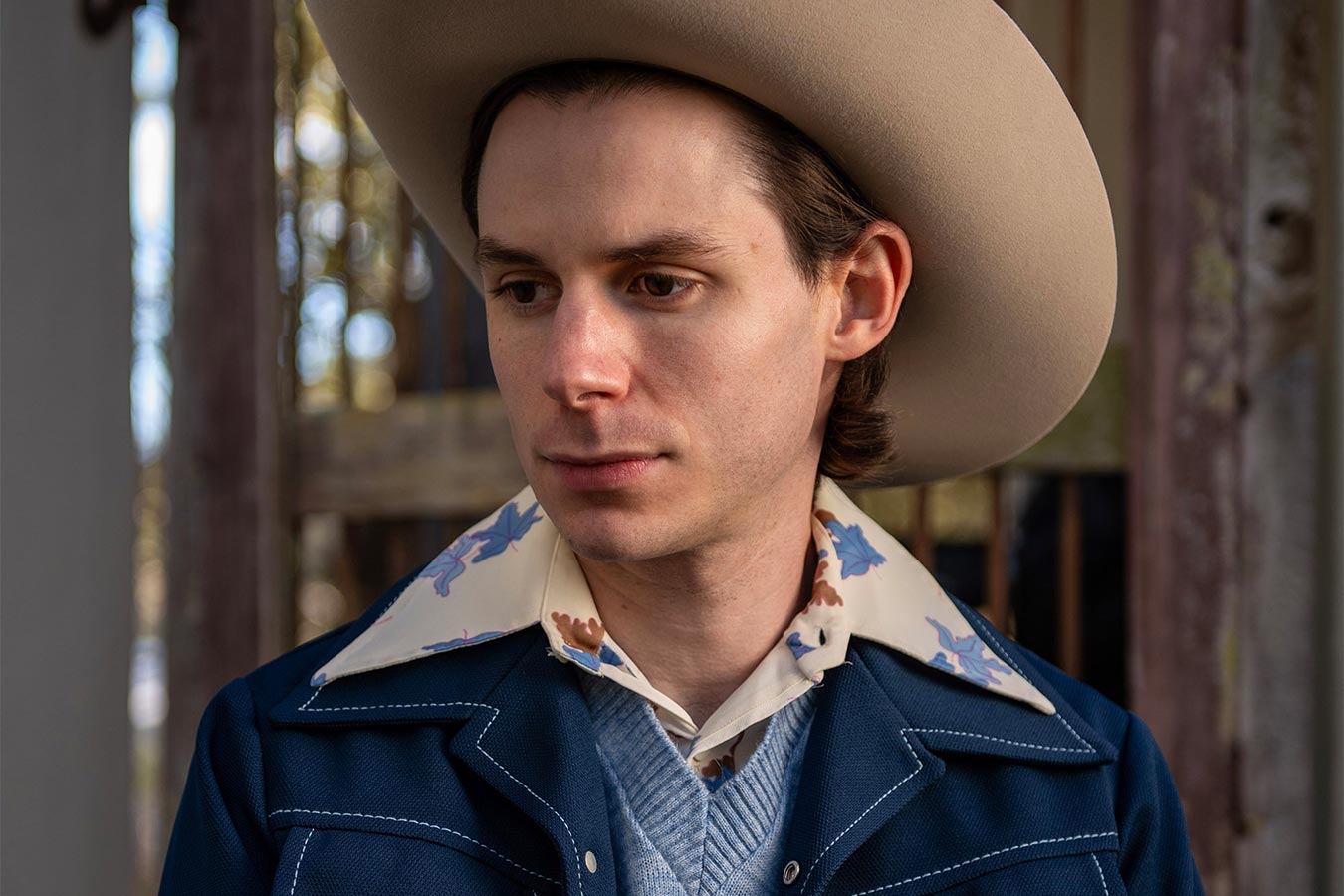Glasstire on “Sound, Speed, Marker”
April 18, 2014

Giant, 2014. Teresa Hubbard / Alexander Birchler
High Definition video with sound 30min., loop. Courtesy of Tanya Bonakdar Gallery, New York and Lora Reynolds Gallery, Austin. Commissioned by Ballroom Marfa
Glasstire recently reviewed Ballroom’s current exhibition, Hubbard/Birchler’s Sound, Speed, Marker. An excerpt:
The evolution from documentation to dispersion is fulfilled in the last video, Giant (2014), which was commissioned by Ballroom Marfa. It is shown in the largest space, on three screens that fill the long wall in the gallery. When we see a continuous image across this expanse, the extreme horizontal aspect ratio calls to mind the epic grandeur of the eponymous 1956 film itself. Hubbard and Birchler’s formidable technical prowess allows them to capture stunning shots of the landscape, sunsets, thunderstorms, even ants swarming a dead grasshopper. The site of these natural wonders is an abandoned film set constructed by Warner Brothers for the original Giant. Now it is merely a skeletal ruin perched in the landscape, an armature about which the degradations of nature continue unabated.
Its role as an armature is twofold. It is a frame through which we see the landscape, in the present, and it is a relic, through which Hubbard and Birchler imagine the drafting of the contract between Warner Brothers and the land owner on which the structure was to be built. Giant cuts back and forth between these two scenarios. They introduce a new element that was absent from the previous two videos, historical reconstruction. A secretary in a sunny office in February 1955 sits at her typewriter, consulting the shorthand on her notepad, typing up the contract. We get extreme closeups of the typewriter mechanisms, the keys striking the paper, the carriage return; the secretary, all lipstick and eyeliner, smokes, is visited by a male supervisor, and gazes wistfully out the window for some reason.
Giant dispenses with spoken language altogether, and the convention of talking-head interviews. There are no “real” people telling their stories. The site of the historical movie is not defined by absence, as in the previous two videos. Instead, the history is concrete and well documented, which seems to grant license to Hubbard and Birchler to push further away from narrative. In this, they achieve fantastic visual pleasure with the landscape scenes in the present.
Continue reading over at Glasstire.
